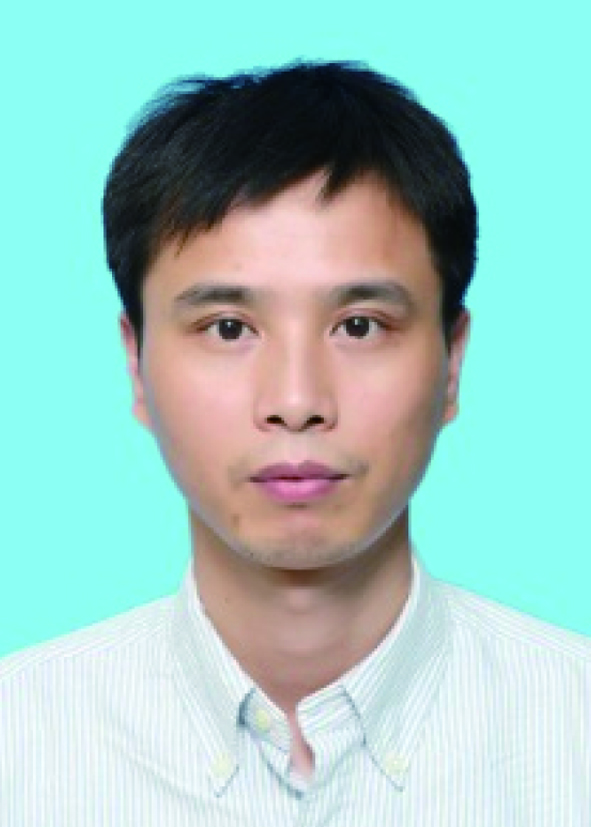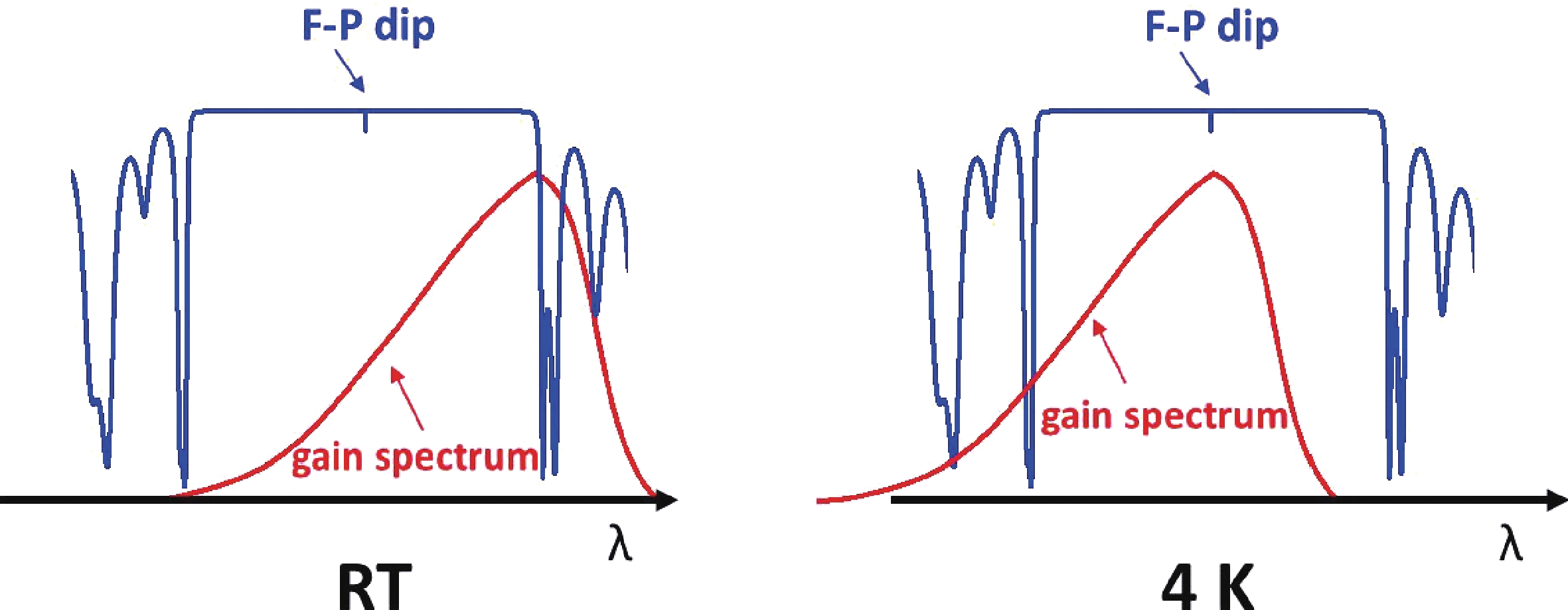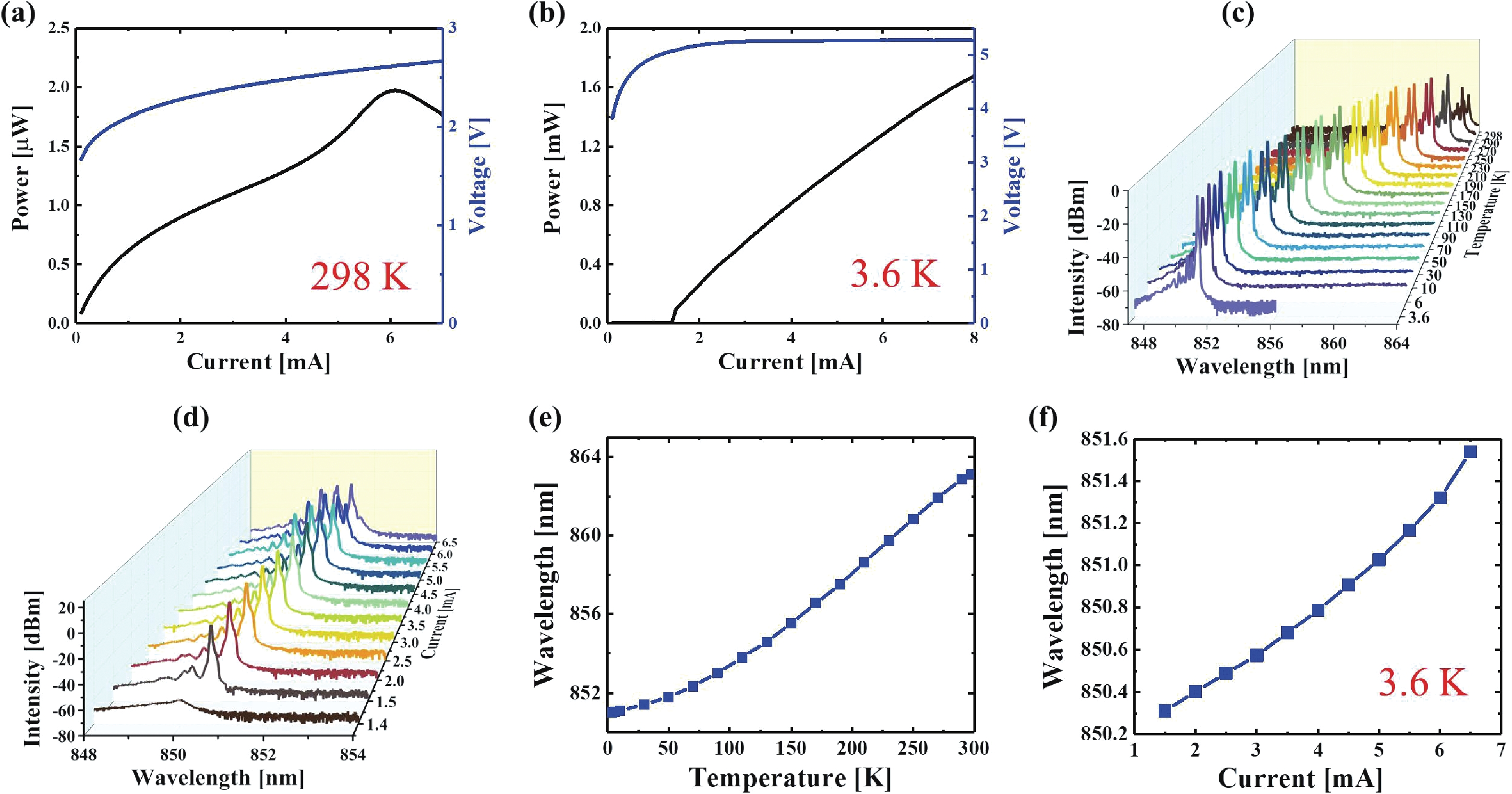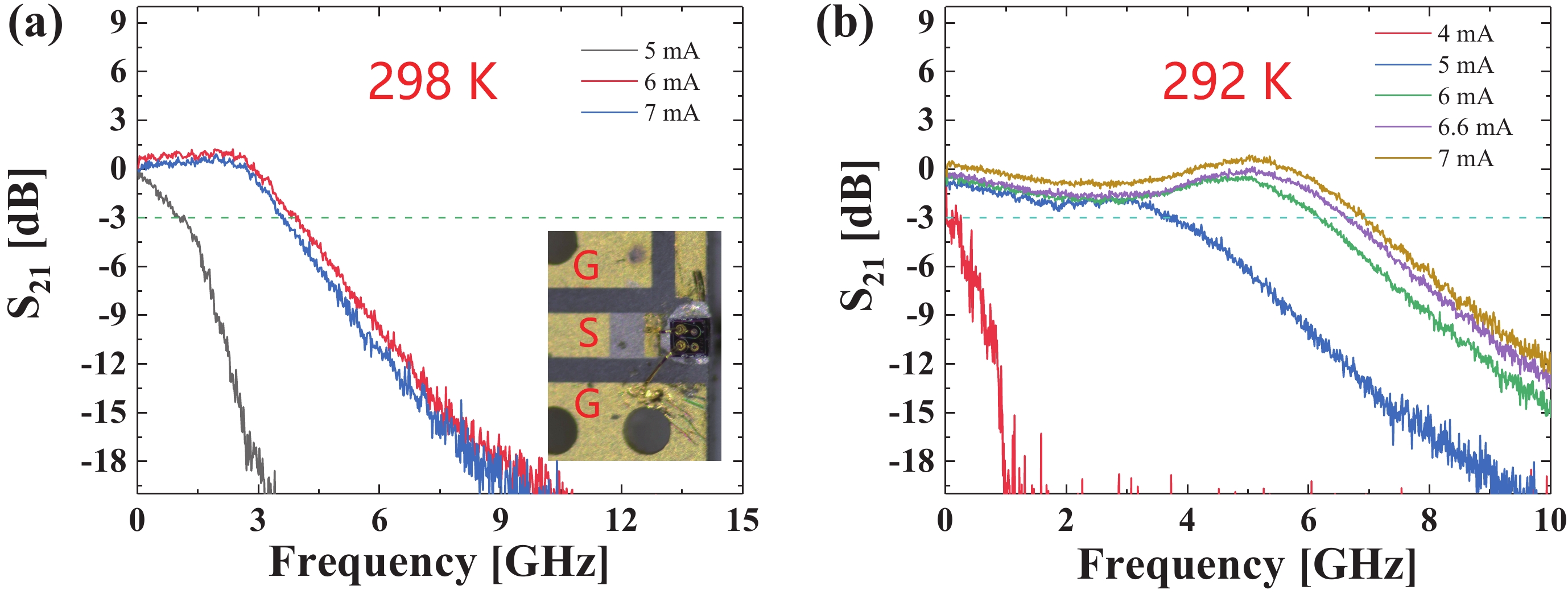| Citation: |
Anjin Liu, Chenxi Hao, Jingyu Huo, Hailong Han, Minglu Wang, Bao Tang, Lingyun Li, Lixing You, Wanhua Zheng. Single-fundamental-mode cryogenic (3.6 K) 850-nm oxide-confined VCSEL[J]. Journal of Semiconductors, 2024, 45(10): 102401. doi: 10.1088/1674-4926/24070025
****
A J Liu, C X Hao, J Y Huo, H L Han, M L Wang, B Tang, L Y Li, L X You, and W H Zheng, Single-fundamental-mode cryogenic (3.6 K) 850-nm oxide-confined VCSEL[J]. J. Semicond., 2024, 45(10), 102401 doi: 10.1088/1674-4926/24070025
|
Single-fundamental-mode cryogenic (3.6 K) 850-nm oxide-confined VCSEL
DOI: 10.1088/1674-4926/24070025
CSTR: 32376.14.1674-4926.24070025
More Information-
Abstract
Cryogenic oxide-confined vertical-cavity surface-emitting laser (VCSEL) has promising application in cryogenic optical interconnect for cryogenic computing. In this paper, we demonstrate a cryogenic 850-nm oxide-confined VCSEL at around 4 K. The cryogenic VCSEL with an optical oxide aperture of 6.5 μm in diameter can operate in single fundamental mode with a side-mode suppression-ratio of 36 dB at 3.6 K, and the fiber-coupled output power reaches 1 mW at 5 mA. The small signal modulation measurements at 298 and 292 K show the fabricated VCSEL has the potential to achieve a high modulation bandwidth at cryogenic temperature. -
References
[1] Holmes D S, Ripple A L, Manheimer M A. Energy-efficient superconducting computing-power budgets and requirements. IEEE Trans Appl Supercond, 2013, 23, 1701610 doi: 10.1109/TASC.2013.2244634[2] Superconducting Technology Assessment, Nat. Secur. Agency, Office Corporate Assessments, Fort Meade, MD, USA, Aug. 2005[3] Liu A J, Wolf P, Lott J A, et al. Vertical-cavity surface-emitting lasers for data communication and sensing. Photon Res, 2019, 7, 121 doi: 10.1364/PRJ.7.000121[4] Goncher G, Lu B, Luo W L, et al. Cryogenic operation of AlGaAs-GaAs vertical-cavity surface-emitting lasers at temperatures from 200 K to 6 K. IEEE Photon Technol Lett, 1996, 8, 316 doi: 10.1109/68.481102[5] Serkland D K, Geib K M, Peake G M, et al. 850-nm VCSELs optimized for cryogenic data transmission. Proc SPIE, 2012, 8276, 82760S doi: 10.1117/12.909590[6] Fu W, Wang H L, Wu H, et al. Cryogenic 50 GHz VCSEL for sub-100 fJ/bit optical link. 2020 IEEE Photonics Conference (IPC), 2020 doi: 10.1109/IPC47351.2020.9252266[7] Fu W N, Wu H N, Feng M. Superconducting processor modulated VCSELs for 4K high-speed optical data link. IEEE J Quantum Electron, 2022, 58, 8000208 doi: 10.1109/JQE.2022.3149512[8] Wu H, Fu W, Liu Z, et al. Cryogenic oxide-VCSEL at 2.8 K demonstrates record bandwidth f-3dB > 50 GHz, Pout > 14 mW and PAM-4 data rate up to 128 Gb/s. Proc Opt Fiber Commun Conf Exhibit (OFC), 2024, M2D. 2[9] Liu A J, Tang B, Li Z Y, et al. 70 Gbps PAM-4 850-nm oxide-confined VCSEL without equalization and pre-emphasis. J Semicond, 2024, 45, 050501 doi: 10.1088/1674-4926/45/5/050501[10] Lu B, Lu Y C, Cheng J, et al. Gigabit-per-second cryogenic optical link using optimized low-temperature AlGaAs-GaAs vertical-cavity surface-emitting lasers. IEEE J Quantum Electron, 1996, 32, 1347 doi: 10.1109/3.511547[11] Zhou P, Lu B, Cheng J L, et al. Vertical-cavity surface-emitting lasers with thermally stable electrical characteristics. J Appl Phys, 1995, 77, 2264 doi: 10.1063/1.358813[12] Wu H, Fu W, Feng M, et al. 2.6K VCSEL data link for cryogenic computing. Appl Phys Lett, 2021, 119, 041101 doi: 10.1063/5.0054128[13] Wu H N, Fu W N, Wu D F, et al. 2.9K VCSEL demonstrates 100 Gbps PAM-4 optical data transmission. Appl Phys Lett, 2022, 121, 011102 doi: 10.1063/5.0095321[14] Jiang G Q, Zhang Q H, Zhao J Y, et al. Comprehensive measurement of the near-infrared refractive index of GaAs at cryogenic temperatures. Opt Lett, 2023, 48, 3507 doi: 10.1364/OL.491357[15] Zielińska A, Musiał A, Wyborski P, et al. Temperature dependence of refractive indices of Al0.9Ga0.1As and In0.53Al0.1Ga0.37As in the telecommunication spectral range. Opt Express, 2022, 30, 20225 doi: 10.1364/OE.457952[16] Elshaari A W, Zadeh I E, Jöns K D, et al. Thermo-optic characterization of silicon nitride resonators for cryogenic photonic circuits. IEEE Photonics J, 2016, 8, 2701009 doi: 10.1109/JPHOT.2016.2561622[17] Coldren L A, Corzine S W, Mašanović M L. Diode lasers and photonic integrated circuits. Hoboken: Wiley, 2012 -
Proportional views





 Anjin Liu received the Bachelor degree in 2006 from Huazhong University of Science and Technology in China, and the Ph.D. degree in 2011 from Institute of Semiconductors, Chinese Academy of Sciences (CAS). From 2012 to July of 2013, he was a Postdoc Fellow in Fraunhofer HHI in Berlin. In August of 2013, he joined in Prof. Dieter Bimberg’s group in TU Berlin with funding from Alexander von Humboldt foundation. Currently, he is a professor in Institute of Semiconductors, CAS. His research interests include high-speed VCSELs, tunable MEMS-VCSEL, semiconductor lasers, and integrated photonics. He has authored or coauthored 60+ papers in scientific journals and holds 1 issued U.S. and 18 issued Chinese patents. He was the recipient of the Special Prize of President Scholarship for Postgraduate Students by CAS, Excellent Doctoral Dissertation Award by CAS, Alexander von Humboldt Postdoctoral Research Fellowship, and State Technological Invention Award.
Anjin Liu received the Bachelor degree in 2006 from Huazhong University of Science and Technology in China, and the Ph.D. degree in 2011 from Institute of Semiconductors, Chinese Academy of Sciences (CAS). From 2012 to July of 2013, he was a Postdoc Fellow in Fraunhofer HHI in Berlin. In August of 2013, he joined in Prof. Dieter Bimberg’s group in TU Berlin with funding from Alexander von Humboldt foundation. Currently, he is a professor in Institute of Semiconductors, CAS. His research interests include high-speed VCSELs, tunable MEMS-VCSEL, semiconductor lasers, and integrated photonics. He has authored or coauthored 60+ papers in scientific journals and holds 1 issued U.S. and 18 issued Chinese patents. He was the recipient of the Special Prize of President Scholarship for Postgraduate Students by CAS, Excellent Doctoral Dissertation Award by CAS, Alexander von Humboldt Postdoctoral Research Fellowship, and State Technological Invention Award.
 DownLoad:
DownLoad:

















